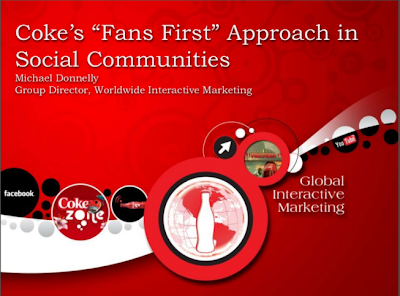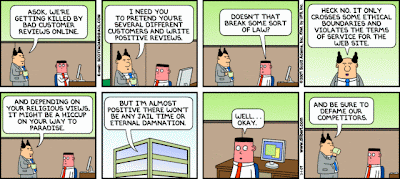Ever since the dawn of the Internet, the marketing landscape has undergone changes at a very fast clip. We get to hear of new digital technologies, new social media channels and new media consumption behaviours almost every day. Adding to this mayhem are the plethora of agencies – large and small, old and new, full service and specialist. Over and above all of this, complicating things further for digital marketers and business owners, today’s customers of today expect almost real time responses from the companies they patronise.
Operating in a social landscape is redefining business practices all over the world. It is important to remember that Social Media for businesses is not just about the Social Networks where it builds a profile, a successful social media presence also aids the company’s recall and visibility across the digital spectrum. This multiplier effect is well depicted in this flowchart:
In India however, there is a strange conundrum for many marketers. While everyone agrees with the invincibility of the prediction that digital and social will be the dé facto means of marketing in the near future, no two people seem to agree on how close this future is. Indeed, there are many who are firmly of the opinion that the future is already upon us. Statistics that seek to establish one of these more or less convergent viewpoints abound today. One needs to take a balanced view however, and not be swayed by statistics or adopt a ‘me-too’ attitude when it comes to dealing with social media, especially for business.
Going Social
 Technically, it is very easy to start social media channels for any business. However, as for any other marketing or communication initiative, the plunge has to be well planned. Every business needs to have a master or overall strategy for its social media initiatives. Needless to say, social media strategy should be well connected with the business’s overall marketing / communication strategy. In order to achieve this, it is essential that the same managers involved in setting or evaluating the business at an overall level should also be involved in setting the social media strategy.
Technically, it is very easy to start social media channels for any business. However, as for any other marketing or communication initiative, the plunge has to be well planned. Every business needs to have a master or overall strategy for its social media initiatives. Needless to say, social media strategy should be well connected with the business’s overall marketing / communication strategy. In order to achieve this, it is essential that the same managers involved in setting or evaluating the business at an overall level should also be involved in setting the social media strategy.
Once the overall strategy is in place, individual strategies for each social media channel also need to be built. To evaluate which channels to be present on, the manager should match his social media objectives with the salient features of the channel.
Staying Social
Like the proverbial tiger’s back, once you are on Social Media, you can never get off. In order to ensure that one doesn’t get thrown off, but instead rides far and wide with the tiger, one must follow the ground rules of communication. One of the most important differentiators from traditional advertising communication is that Social Media is a multi-party discussion. A brand has to respect what others are saying, take cognizance of their views and opinions, and accept that contrary viewpoints will exist and flourish.
Some of the important pillars for social media success include:
- Co-creation: A brand should take advantage of the ease with which multiple talent sources can be tapped for generating content for itself. Coca Cola as a brand regularly finds its YouTube and Facebook fans creating ‘ads’ that often gain more in popularity, and contribute more to its brand recall as compared to their commissioned ads. While this is an example of unorganised co-creation, there are today enough opportunities to take co-opt co-creators in an organisation’s marketing communications (crowd sourcing), market research (testing communications and products and gathering feedback through the Internet), product / merchandise development (crowd sourcing) and even distribution (incentivised sharing of coupons that drive sales).
Distributed Ownership: Somewhat contrary to traditional thinking and legal opinion, a brand is owned by its customers. Marketers need to make customers feel that they can lay claim to that ownership. An example can be found in the innovative release of the trailer of the movie Chennai Express.The marketers got fans of the movie’s stars to tweet continuously for 3 days ahead of the release of the trailer. The movie was trending on Twitter for most of these three days, giving it a coverage that no amount of paid media could buy. At the end of the activity, the trailer was released online exclusively, a full day ahead of its release in the offline space. http://www.slideshare.net/iStrategy/coca-colas-social-media-strategy
http://www.slideshare.net/iStrategy/coca-colas-social-media-strategy
http://www.chennaiexp2013.com - Interactivity: Social media is accessed through a variety of computing devices – devices that are growing more powerful by the day. Brands need to develop applications that harness the power of these devices. At the same time, the applications need to be compatible to a wide variety of devices. Starting from games, contests & UGC enablers to, social commerce, recruiting and service delivery, the gamut of possibilities on this front is immense. A brand that provides great tools to its users not only engages actively with them, but also builds a technologically savvy image.
- Madness: Mad sells. People like to smile. People like to see things which are different. People like things which are quirky. Brands need to be able to learn to take themselves less seriously.
- Reward: Rewards don’t need to be costly. Acknowledgements, premium content, or %age offs all work as great rewards. The point is that the reward should be something of value to the user, something that can be shown off.
- Listening: A large part of communication in the social age consists of listening.
An active listening program helps a company to find new opportunities – a fast food chain or ready to eat brand may find more demand from customers in an under represented area and there by decide to tap that market; a telecom service provider may find that most of the complaints about poor network are coming from a particular region, and hence set up additional cellular towers there; banks may find that customers in certain branches spend more time waiting at certain times than others, and thereby reallocate staffing patterns; technology companies may find out about new trends in their domains that affects them in the near future.
Listening is best achieved using a combination of automated tools and manual filtering. Some of the popular tools include Radian6, Simplyfy360, BrandsEye, Trackur, AlterianSM2 and SocialMention. Apart from discovering opportunities, an active listening program also helps a company find areas where it may be required to intervene. - Intervention: It is important to remember that quite often the best strategy is to keep quiet.Having said that, there will be many occasions when a response of some sort is required. There may be cases of blatant trademark violations, which require legal action; cases of mis-representation of fact that need to be tackled with a statement of the truth; product or service complaints that need to be addressed with an assurance of concern and proof of corrective action; queries about availability or features that need to be guided into sales; and so on. An intervention strategy will define various kinds of situations when the company will respond, how the query is to be evaluated on whether a response will be derived from a pre-defined response matrix or whether it needs a customised response, a turn-around-time matrix for responses and a guide on the tonality of responses. It is important to remember that in Social Media, it is essential to be always above board, 100% of the time. Any lies will be found out, sooner rather than later. Dilbert’s pointy haired boss sure gets it wrong:
 |
Agency or In House?
A common point of debate in relation to a brand’s social media presence is whether the presence should be managed in house or assigned to a specialist agency. Like in many other situations related to Social Media, no fixed prescription works here. What I like to prescribe to my clients is a team that comprises members from both the client and agency sides, with the ratio of members being decided by the nature of the business. A service oriented business from the telecom sector would need many more people ‘in house’ as compared to a company that manufactures equipment for use in thermal power stations.
Choosing the right agency
It is critical for a business to have the correct partners for its social media activities. Most businesses today would have one or more enlisted agencies that create digital assets for them. Quite a few of them would have some sort of social media capability. For a brand, there are two competing priorities when choosing an agency. Clubbing social media duties other digital communication needs and awarding the entire mandate to a full service digital agency means greater synergies and lesser turnaround times. Employing multiple specialist agencies can generate a wider panorama of ideas and experiences. Each brand will have to decide for itself which of these aspects is more valuable to its brand’s journey in the digital landscape. However, it is essential that the brand manager look very hard at the following factors when evaluating any agency:
- Domain expertise: Does the agency have past experience in our domain or industry? Choosing an agency which does means a shortening of the learning curve, as well as a two way flow of knowledge and experience.
- In house capabilities: Does the agency have resources to execute the tasks in house? While outsourcing is a standard practice today, an agency which outsources too much of its work tends to lose control over quality, delivery times and confidentiality of data. There are also chances of transmission loss occurring when ideas conceived by one agency are being executed by another. The other aspect to look at here is the team size. A great ideation team with a small execution team will lead to inevitable bottlenecks.
- Technology: Is the agency capable of identifying the latest technologies and developing capabilities to exploit them? With rapidly evolving technology landscape, the agency should be in a position to consult the brand about what to adopt and what to ignore, and quickly roll out applications to take advantage of new technologies.
I hope that this small guide will be of some help to you in your social media journey. Every brand needs a customised approach to social media, and I advise you to talk to your agency or marketing colleagues about it. If you are looking for guidance beyond that, I will be happy to talk to you.



No comments:
Post a Comment
Please use this comment box to add any comments or ask queries related to this post. If you have any other queries, please email me.